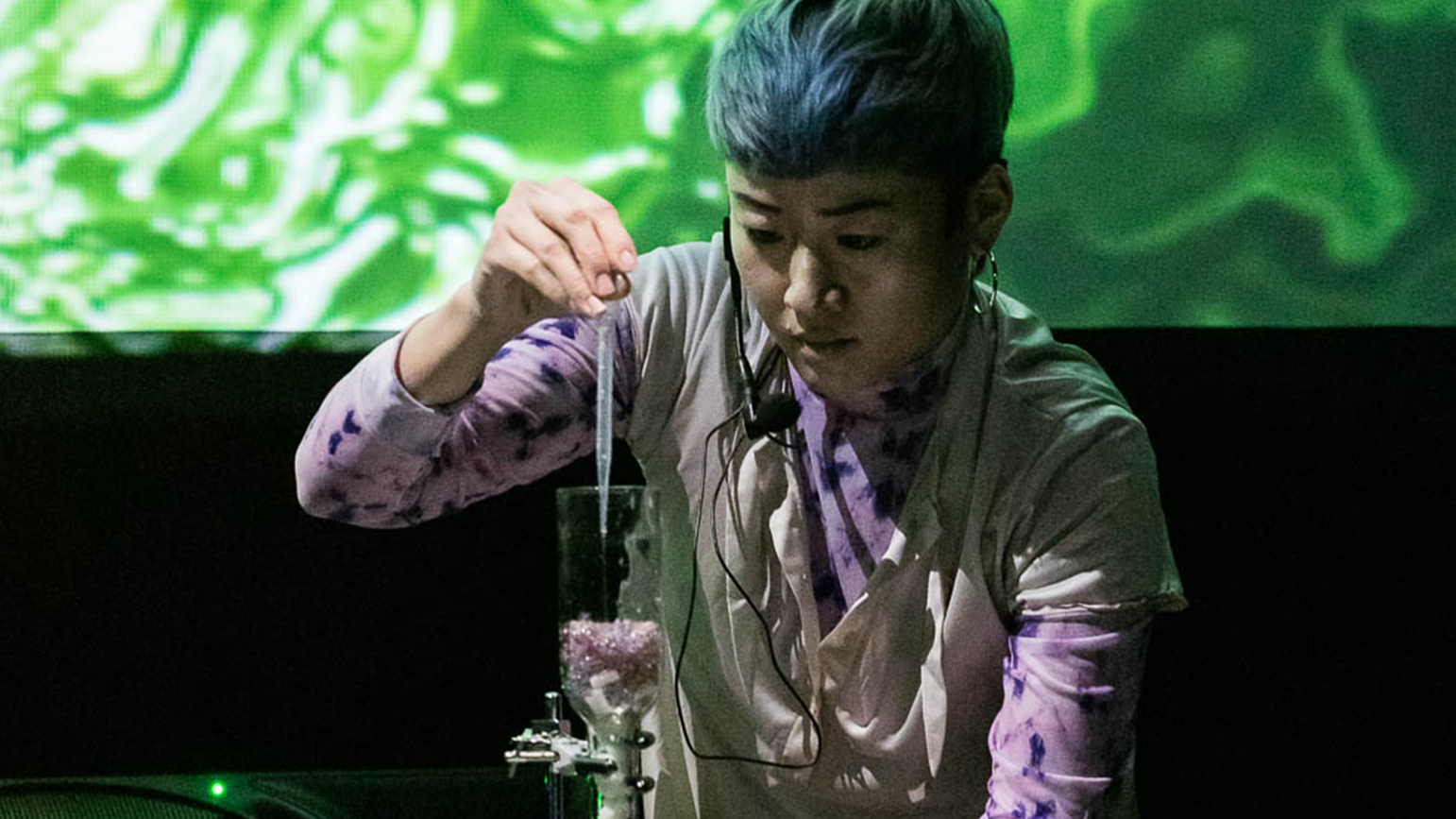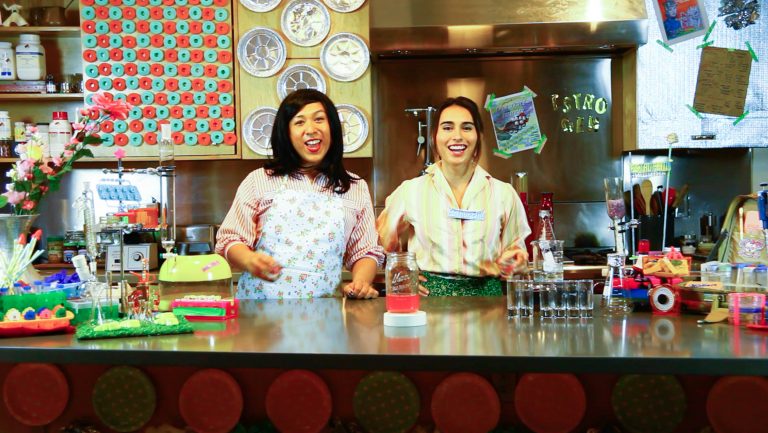
“5 Questions” is a series by the School of Art that asks alumni who are transforming art, culture, and technology about their current work and time at Carnegie Mellon.
Mary Maggic works at the intersection of biotechnology, cultural discourse, and civil disobedience, using science to investigate body and gender politics, subverting the idea of identity as biologically fixed.
After graduating with a BSA in biology and art and minor in environmental studies from Carnegie Mellon University, Mary Maggic earned an MS in Media Arts and Sciences from MIT Media Lab. Their projects have been covered by The Guardian, Vice, and Gizmodo, among others. Maggic won an honorable mention at Ars Electronica in 2017 and was a finalist for the Bio Art & Design Award—given by the NWO, ZonMW, MU Artspace, and BioArt Laboratories in The Netherlands—in 2016 and 2017.

Most people think of biology as being distinct from politics. Could you give an example of how the two merge and how your work seeks to expose and disrupt biopolitics?
I think one of the greatest cultural myths is that science is neutral, when in fact, scientists are constantly taking sides. The tools and apparatuses used in the lab are especially not neutral because they supposedly produce “truths” while making biased cuts in the deep web of entanglements (Karen Barad). I like to think of these truths as fictions in order to challenge the authority of science, and show that we don’t have to be scientists to construct our own fictions. That’s why so much of my work and research is in do-it-together science—to see how we can produce our own tools and knowledge, and ways of seeing.
Much of your current work centers on estrogen. Why do you find estrogen to be an important subject matter?
Hormones are a powerful tool of biosurveillance. These molecules are controlled by governments, manufactured and marketed by corporations and thereby dictate our health, body autonomy, and definitions of normal and natural. You can see from biology diagrams of how femme and male bodies should look that the science behind them has already bought into a cis-hetero-normative paradigm. So I’m curious how we can “emancipate the estrogen molecule,” deprogram our bodies and ideologies from dominant discourses and aesthetics of sex and gender.

You’ve described yourself as an “artist working at the intersection of biotechnology, cultural discourse, and civil disobedience.” What role do you see yourself and other “BioArtists” as having in the sciences? What about in the broader society?
I think bioartists or any interdisciplinary artists for that matter are disrupting the boundaries that we’ve constructed around topics like science and technology. Artists can show that these topics aren’t inherently neutral or progressive, that they are part of a much deeper and complex interconnected system that may of us fail to notice.
Could you talk a bit about your time as an undergraduate at CMU’s School of Art? Are there any experiences you had as a student that stand out?
I remember the BXA experience being extremely tough. Since I was doing Biology and Art, I had to juggle exams, lab reports, concept studio projects, and on top of that, figuring out my artist methodology and voice. I’m very grateful for the program being so diverse. Almost every art student was majoring in something else. There was a sense of camaraderie in that.
Do you have any advice to share with our students?
My best advice is to stay confused. Navigating boundaries, borders, edges, and undefined spaces means you are bound to encounter confusion, and you should never shy away from that encounter.
1. Mary Maggic at Post Cyber Live. Photo by Mark Blower
2. Mary Maggic, Housewives Making Drugs, 2017
3. Mary Maggic, Estrofem! Lab, YES-HER Yeast biosensors, 2017




